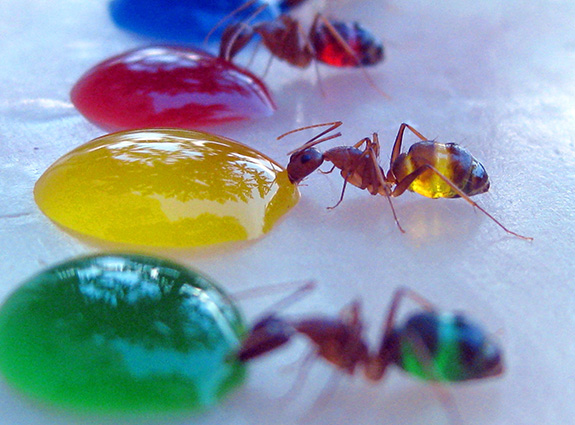
by chelsea schuyler
Blue Prerequisite
Last blog, I promised you rainbow animals. Due to a tangent on purple’s validity, I did not deliver. But in this age of informed voting, I feel the public should be well-informed of the colors they are considering. After all that purple = blue hubbub, surely blue should be required in a rainbow animal?
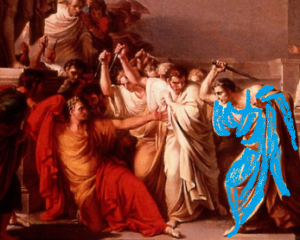
Blue too, is an impostor. You heard me, Blue! If that IS your real name. Witness what the animal has to do to get it, just so we can have rainbow animals. It’s tangent time…
What Is Color?
What causes color? Pigment, right? Which is…? I used to think pigment was a dust or liquid that just sort of was a specific color (thanks ‘art’ classes), but scientifically, pigment is just a chemical that reflects light. So what determines which color is reflected?
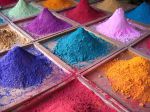
Electrons. Those little things in atoms that orbit the nucleus.
Picture each electron as a coiled spring with a stereo on its shoulder (also – picture springs with shoulders). This spring is bouncing up and down in perfect rhythm to its stereo’s particular jam. This is vibrational frequency.
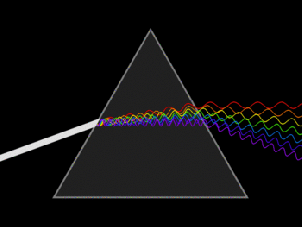
Each color of light also has a stereo, playing a different tune (frequency). Red has a different frequency from orange, which is different from yellow, etc. When light and the electrons of a thing interact, color is born.
Let’s take (spoiler alert) a green leaf for example. The leaf has a bajillion chlorophylls, which all have electrons bouncing away to their particular frequency (rock and roll). When red light shines down, the frequencies match. In other words, the electron’s stereo and light’s stereo are playing the same beat (like from any two Nickelback songs), so they party down and the room heats up with some serious jamming.

The same happens with all the other colors, the vibrations amplify each other, so the light is absorbed and turned into heat. All the other colors, that is, except green. Green is listening to classical music, which does not and cannot jam with rock and roll.
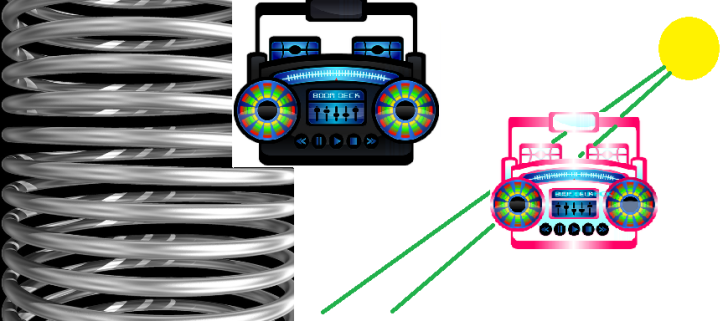
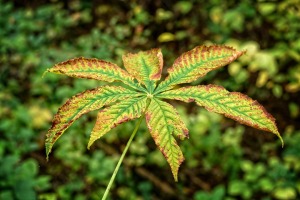
So the leaf electron is like “um, that is distinctly unrockin.” The vibrations are totally off, and the offending green part of the spectrum is kicked out, or reflected back, leaving us passersbys to see a leaf as green.
(What about in autumn? Well, there are other atoms in a leaf that reflect orange and yellow, but there’s so much chlorophyll reflecting green that green dominates. That is, until fall when all that chlorophyll dies off, leaving yellow and orange to take over and glorify our deciduous forests. Science!)
What Has Pigment?
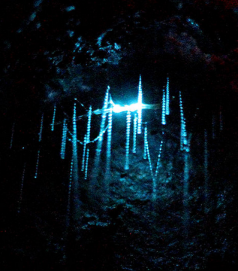
Tons of things have cells that make pigment: plants, animals, rocks, clay, soil, etc. Color is all about light, which is why when it’s dark out, everything looks black (except like glowworms or squid which emit their own light in an attempt to reduce dependency on foreign sun. Buy local!).
Plants are big on pigments like:
- chlorophyll (green)
- carotenoids (yellow, orange, red)
- flavonoids (red, purple, or blue)
Think blueberries, carrots, eggplant, and flowers. Or just think blueberries, because that’s all the greatness one mind need contain.
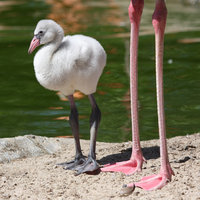
Animals are big on:
- melanin (black, brown, reddish brown, sandy, tan, and other names for brown that make us feel interesting)
That’s pretty much it. Sometimes they can cheat by eating pigment—cardinals are red from eating berries; flamingos are pink from eating brine shrimp (which are pink because of eating algae).
But blue comes from pigment too right? Well, in plants and rocks maybe, but animals missed the Noah’s boat on that one. Vertebrates cannot make blue. Not even by cheating and eating blueberries – the pigment breaks down too fast.
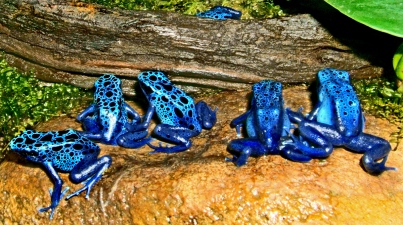
But wait, blue vertebrates are everywhere! Fish, frogs, lizards, snakes, –and birds? my god, you can’t throw a rock and not hit two blue birds with one stone. (I’m looking at you western/eastern/mountain bluebird, blue/scrub/Stellar’s jay, parakeet, macaw, kingfisher, hummingbird, sunbird, turaco, blue footed boobie, blue-eared starling, blue waxbill, peacock, blue finch, kookaburra, lazuli bunting, blue-billed duck, blue heron, …look I’m running out of stones here).

How do animals do it then? Well, when chemistry fails, try physics.
Structural Coloration
Turns out, if you contort your microscopic skin to have really tiny (shall I say ‘superfine’?) coiled nanostructures, you can force blue to reflect back. It’s called structural coloration.
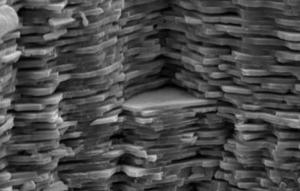
If you make the outer walls of your cells stack on top of each other, making the distance between each layer about half the length of a blue light wave, the light will bounce back in perfect sync with other blue waves bouncing back, and amplify itself in constructive interference.
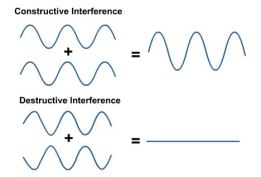 Other colors will either pass through or cancel out due to destructive interference. It’s like if two people put two buoys in still water and start bobbing them up and down. If they bob together, the ripples in the water will combine and become even bigger than they would with only one buoy. But if they bob off-time, the ripples will cancel each other out, effectively flat-lining the surface. Do not come in, because the water is NOT fine.
Other colors will either pass through or cancel out due to destructive interference. It’s like if two people put two buoys in still water and start bobbing them up and down. If they bob together, the ripples in the water will combine and become even bigger than they would with only one buoy. But if they bob off-time, the ripples will cancel each other out, effectively flat-lining the surface. Do not come in, because the water is NOT fine.
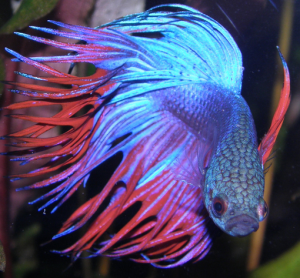
This works so well that the chosen light reflects with an incredible brightness, and because the color depends on angle, it will change as you alter your stance, i.e. be iridescent. Hence the supershininess of peacock feathers, scarab beetles, Betta fish, etc.
Insects are big on this structural coloration. Take the blue Morpho butterfly. If you took a wing of this incredible creature, and poured isopropanol on it (like you do), you will fill in all the spaces in the nano structures, the light will now bounce of the isopropanol instead of the structures. The wing loses its blue appearance and turns its pigmenty brown. A few moments later, the beauty killer evaporates and the wing shines blue again.
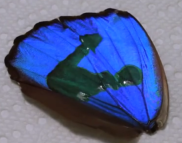
It’s not just blue – every color of light has a wavelength, so you can make structural coloration for every color. Or you can even combine pigment and structure.
Take the Smooth Green Snake. This snake has a yellow pigment but skin structure for blue. The yellow and blue combine to make green. However, pigments break down after death, while structural coloration can remain for decades. So kill this green snake, and it will turn blue.
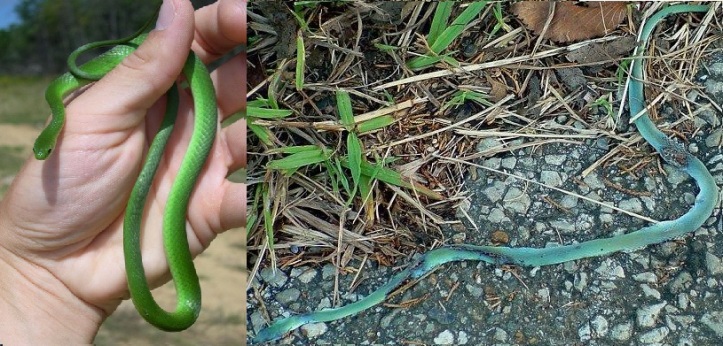
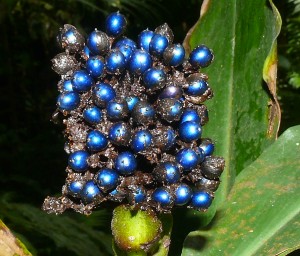
Plants do it too. The Pollia condensata plant has little berries that reflect 30% of the light, making it the most reflective and brilliant living thing on Earth. They’re not even edible, but the thought is that their pixelated shine makes them irresistible to birds who decorate their nests with them (dead berries are still blue – blue like a snake) and therefore spread the seed.
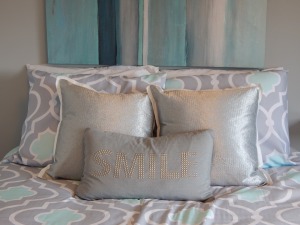
This is the same method by which the functionless decorative pillow reproduces in the United States.
SO in order to be a rainbow animal, I declare that you must have pigment and structural coloration combos so that purple and blue are represented. Who’s up to it? Tune in next week…
*This blog is not implying that electrons enjoy Nickelback.
photos are public domain or created by me except:
Rainbow ants: photo by Dr. Mohamed Babu
Indian pigment: photo by Dan Brady CC BY 2.0
Nickelback: photo by Stuart Sevastos CC BY 2.0
Glowworm: photo by Markrosenrosen
Flamingo: photo by Nathan Rupert CC BY NC-ND-2.0
Blue Frogs: photo by Wildfeuer CC BY SA 3.0
Betta fish: photo by Rafael Medina CC BY NC-ND-2.0
Green snake: photo by Zack CC BY NC-SA-2.0
Green snake (blue): photo by Rurality
Berries: photo by Juliano Costa CC BY SA 3.0

Cardinals? Berries? Red but not red red? Ahhhhhh! This blog is blowing my mind!
LikeLike